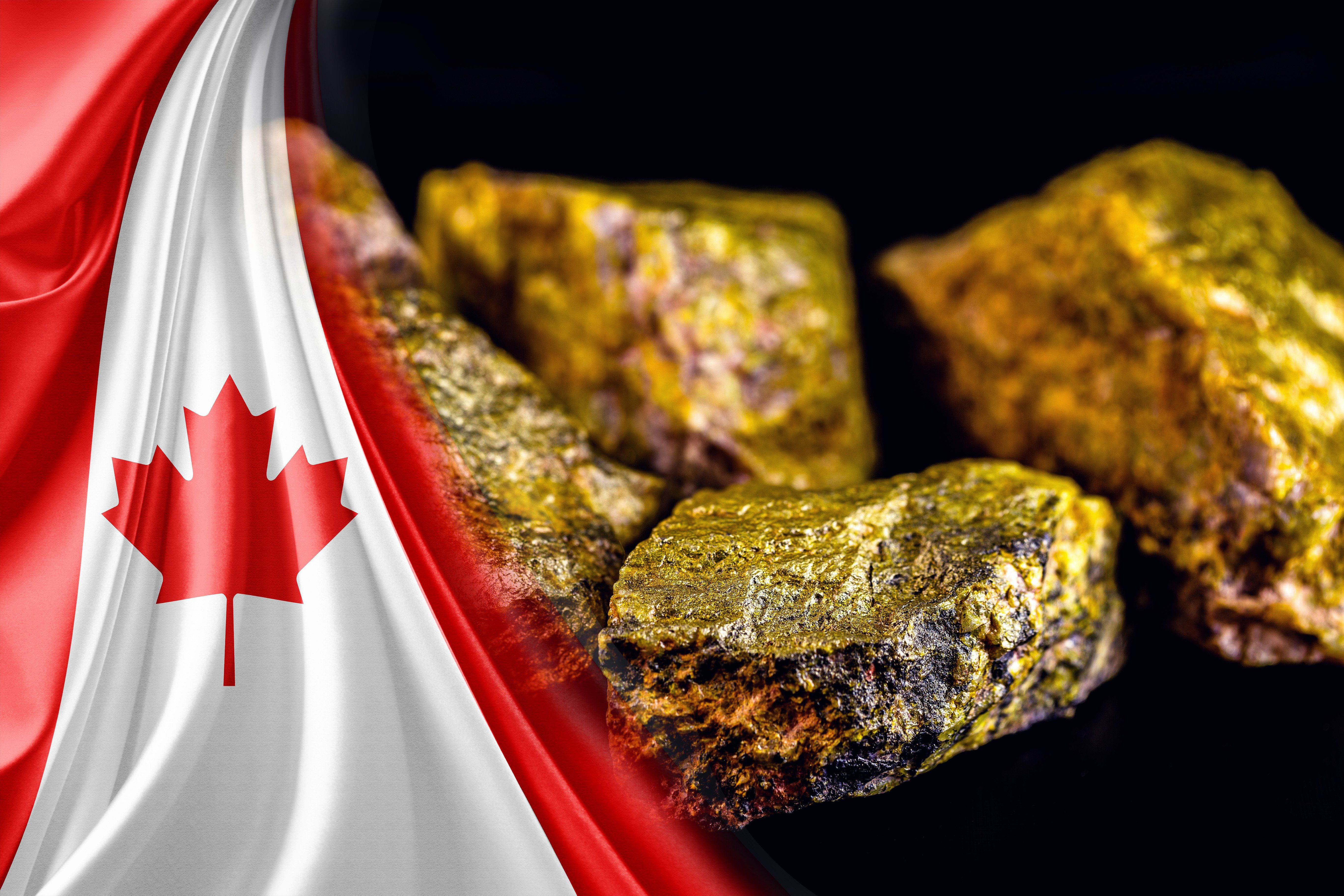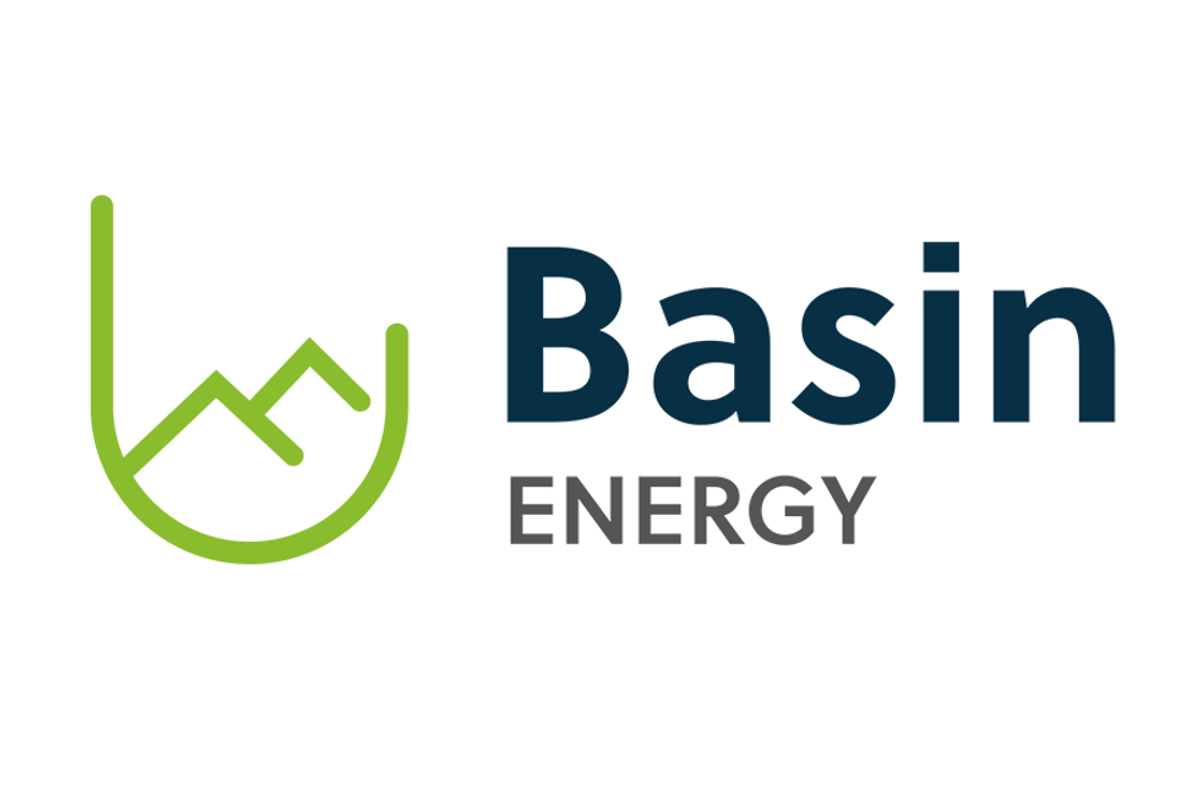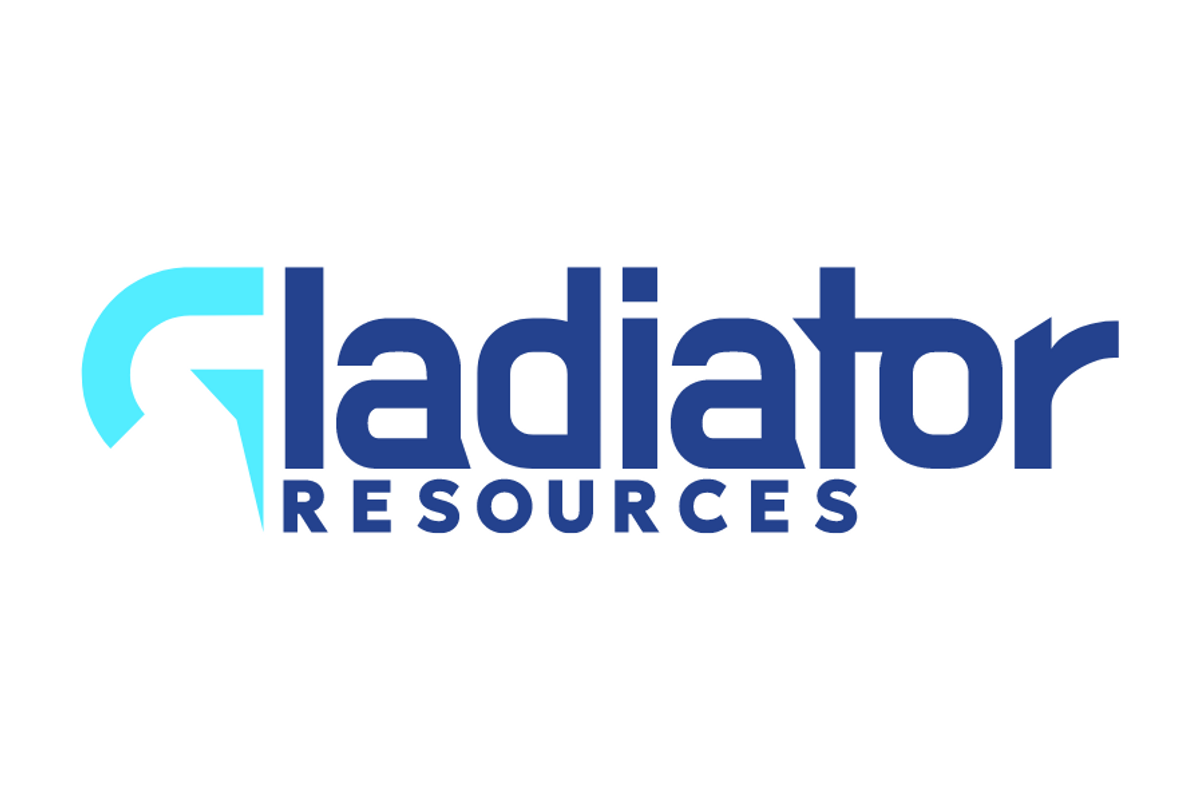
October 28, 2024
Gladiator Resources Ltd (ASX: GLA) (Gladiator or the Company) is pleased to provide shareholders with the Company’s Activities and Appendix 5B Cashflow Report for the quarter ending 30 September 2024.
HIGHLIGHTS
- Completion of drilling at the Mkuju Project - 20 diamond core holes for 2800 m of drilling, testing the SWC and Mtonya targets, and testing potential extensions to the Likuyu North deposit.
- At SWC, high-grade uranium from surface including:
- 3.8m @ 2,458ppm eU3O8 from surface,
- 2.4m @ 3,528ppm eU3O8 from surface,
- 1.8m @ 3,089ppm eU3O8 from surface and 1.2m @ 988ppm eU3O8 from 5.9m depth
- At Mtonya, best interval of 2.3m @ 372ppm eU3O8 from 6.16m depth.
- At Likuyu North, possible moderate extension to the deposit indicated by visual mineralisation in LNDD015, now awaiting assays; and
- LNDD020 drilled central to the Likuyu North deposit to provide information for an initial assessment of In-Situ Recovery (ISR); intersected 6 mineralised intervals including:
- 2.5 metres with an average grade of 438 ppm eU3O8 from 17.1m depth.
- 7.1 metres with an average grade of 1,963 ppm eU3O8 from 63.1m depth.
MKUJU URANIUM PROJECT - TANZANIA
Table 1 summarises the work completed during the quarter at the Mkuju Project.

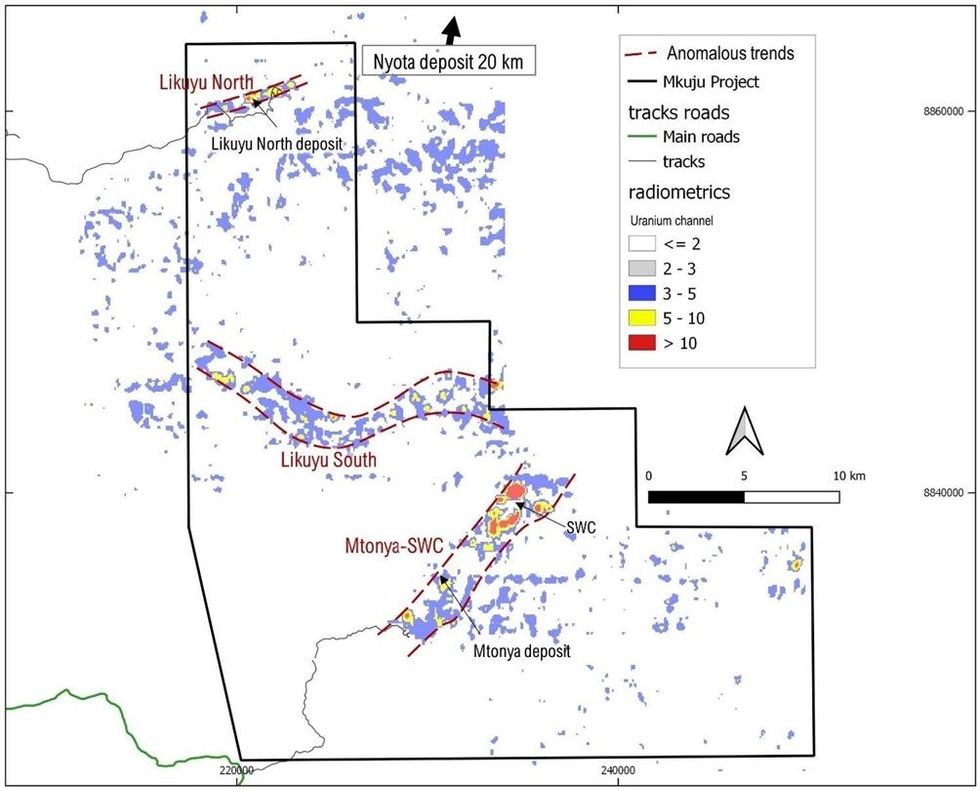
SWC TARGET EXPLORATION
During May 2024 a camp was constructed and a drilling and exploration crew was mobilized. The holes drilled at SWC are shown on Figure 2. Table 2 provides the results of the SWC and Mtonya drilling. The drilling at SWC was to follow-up on the high-grade intervals achieved from the trenches reported in the Company announcement dated 9th January 2024.
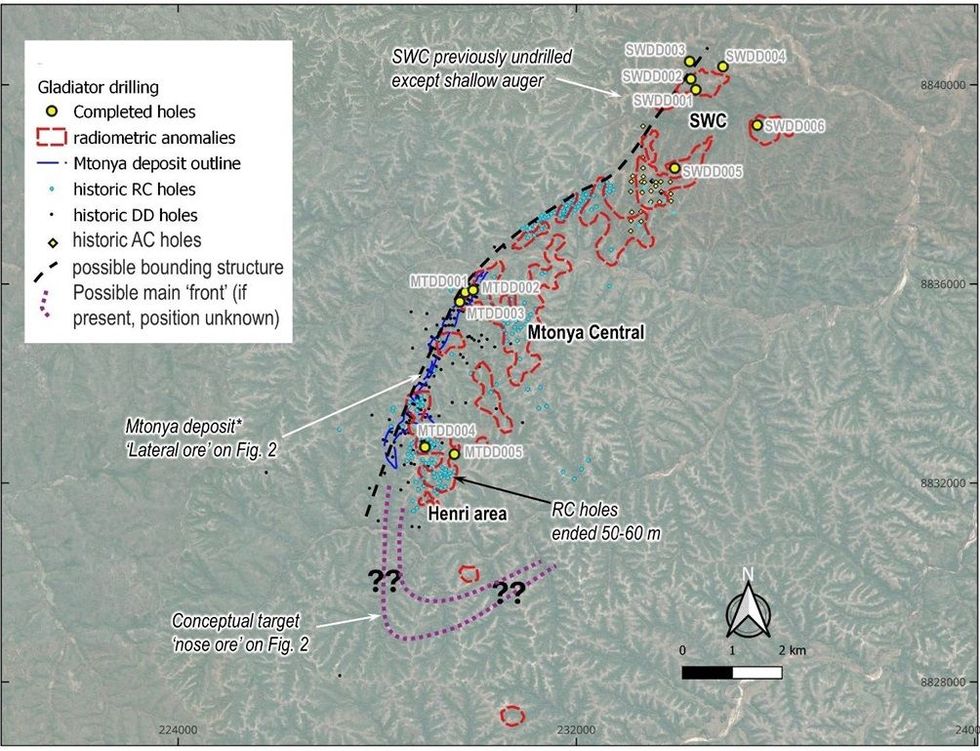
All holes were vertical, drilling was by diamond core and the deepest was 188.7 metres. The results were reported in announcements dated 24th June and 16th August 2024. Selected results are provided below:
- SWDD001: 3.8m @ 2,458ppm eU3O8 from surface.
- SWDD002: 2.4m @ 3,528ppm eU3O8 from surface.
- SWDD005: 1.8m @ 3,089ppm eU3O8 from surface and 1.2m @ 988ppm eU3O8 from 5.9m depth
- SWDD006: 5.3m @ 143ppm eU3O8 from 3.0m depth
The trench and high-grade drilling intersections are interpreted to be the remains of a layer that is preserved on topographic highs within a relatively downthrown block, as illustrated in Figure 3, which represents a cross-sectional interpretation through SWC. Where the layer is at or very near surface as in SWDD001 and SWDD002, enrichment by supergene processes may have occurred whereas where deeper and unaffected by the surficial enrichment, as in SWDD006, grades are lower. No significant mineralisaton was intersected deeper in the holes drilled at SWC.
Click here for the full ASX Release
This article includes content from Gladiator Resources Limited, licensed for the purpose of publishing on Investing News Australia. This article does not constitute financial product advice. It is your responsibility to perform proper due diligence before acting upon any information provided here. Please refer to our full disclaimer here.
GLA:AU
The Conversation (0)
29 May 2024
Gladiator Resources
Capitalizing on the uranium momentum with prolific assets in Tanzania
Capitalizing on the uranium momentum with prolific assets in Tanzania Keep Reading...
23 December
Lobo Tiggre: Supply Tight, Demand Strong, What's Next for the 2026 Uranium Market?
Lobo Tiggre, CEO of IndependentSpeculator.com, described uranium’s key role in providing baseload energy, a narrative that is only being heightened by added artificial intelligence data center and electric vehicle (EV) demand projections. “The use case is baseload power. There’s no substitution,... Keep Reading...
22 December
Ben Finegold: Uranium in 2026 — Price Outlook, Plus Stocks, Supply and Demand
Ben Finegold, head of research at Ocean Wall, shares his 2026 outlook for uranium supply, demand and prices, emphasizing that the nuclear energy story remains strong. While 2025 brought little movement in the spot price, he believes the stage is set for higher numbers. Don't forget to follow us... Keep Reading...
19 December
Denison, Skyharbour Finalize Saskatchewan Uranium Joint Venture Deal
Denison Mines (TSX:DML,NYSEAMERICAN:DNN) has closed a previously announced deal with Skyharbour Resources (TSXV:SYH,OTCQX:SYHBF) that repurposes a large block of uranium exploration ground surrounding Denison's flagship Wheeler River project in Northern Saskatchewan.The recent transaction... Keep Reading...
18 December
5 Best-performing Canadian Uranium Stocks of 2025
The uranium market moved through 2025 with less drama than the previous year, but the quieter tone masked a sector where supply is still tightening beneath the surface. After 2024’s surge to two decade highs, U3O8 prices traded in a narrower range in 2025, slipping to a low of US$63.71 per pound... Keep Reading...
18 December
Resource Expansion Drilling Confirms 3,000 metres of New Uranium Trends with Best Drill Hole of 1.4 GT over 7.6 metres
Resource expansion drilling of 50 holes completed at Lo Herma as planned yielding significant mineralised extensions over 3km to the north of proposed Mine Units 1 and 2. Drilling delivered AMU’s strongest intercept to date ahead of 2026 MRE and Scoping Study updates at AMU’s flagship Lo Herma ISR Uranium Project in Wyoming’s Powder River Basin.
American Uranium Limited (ASX:AMU, OTC:AMUIF) (American Uranium, AMU or the Company) is pleased to advise that 2025 resource expansion drilling at its Lo Herma ISR uranium project in Wyoming’s Powder River Basin (Lo Herma, the Project) has been completed according to plan with the drilling of 50... Keep Reading...
17 December
Completes phase one drilling and expands Sybella-Barkly
Basin Energy (BSN:AU) has announced Completes phase one drilling and expands Sybella-BarklyDownload the PDF here. Keep Reading...
Latest News
Interactive Chart
Latest Press Releases
Steadright Grants Stock Options
24 December
Silverco Confirms No Material Change
24 December
Related News
TOP STOCKS
American Battery4.030.24
Aion Therapeutic0.10-0.01
Cybin Corp2.140.00




